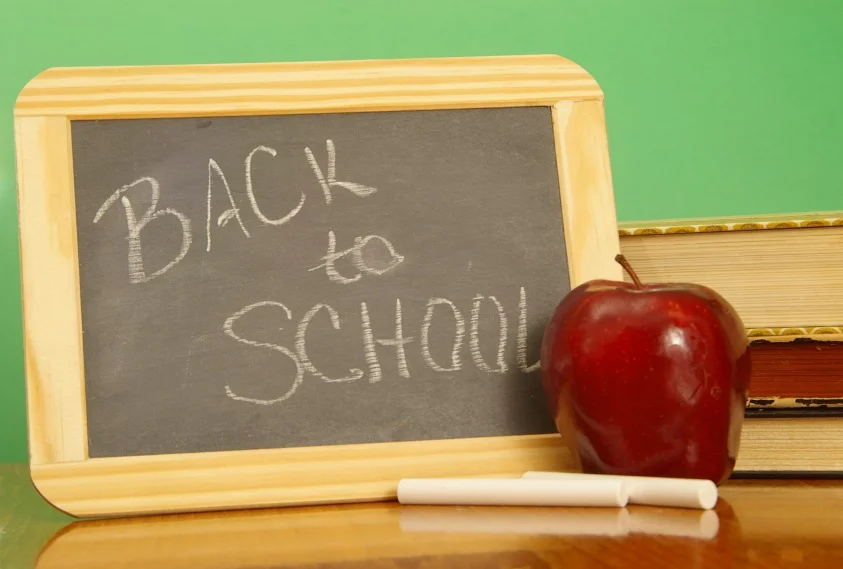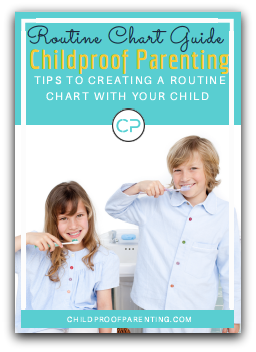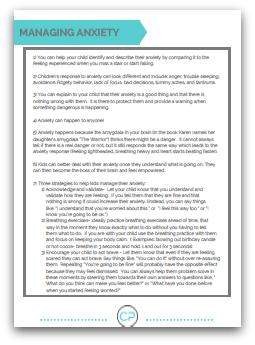It’s that time again. The summer is quickly coming to an end, and back-to-school is approaching. Just thinking about the transition back to school can induce anxiety not only in kids, but also in parents and teachers. I personally had a mental breakdown last week just trying to figure out how I’m going to get my kids to and from two different schools, schedule and drive to a handful of extracurricular activities, and make dinner each night, all while managing my own work schedule. I spent two hours on calendaring and still haven’t figured out how to make it all happen.
In addition to figuring out transportation, extracurricular activities, and childcare, there’s all the back-to-school shopping that’s required. Last year’s clothes and shoes definitely will not fit growing children. And as if buying a new wardrobe isn’t enough, there are all the school supplies that need to be purchased, too.
Children have their own unique stressors to deal with. Not only might they be facing unknowns, like a new school, teacher, and set of peers, but they also have to adjust to an entirely different daily schedule. Many times the shift from carefree, unscheduled summer days to structured home-and-school days can be overwhelming.
Much depends on the age of your child. There are stressors unique to each age and stage. Young children can definitely have trouble separating from their families when being introduced to a new school or environment, causing stress for the child, the parents, and the teachers. Older children often feel stressed about making grades, peer pressure, heavy workloads, and their appearance.
Parents, kids, and teachers need to have a few tools to ease them into the transition. Focusing on just a few strategies helps keep things simple and avoids additional stress. Three simple strategies to manage back-to-school stressors are modeling a positive attitude, re-introducing structure and routine, and using mindfulness practices in both the home and classroom.
Watch Your Attitude
Your attitude and emotions help set the tone for your children. If you’re not managing your own anxieties and frustrations well, you can’t expect your children to do any better. You’re modeling for your children all the time, so demonstrating a positive attitude is important.
You can help your children approach the new school year with anticipation, excitement, and enthusiasm by simply focusing on how you feel and ensuring that you’re demonstrating a positive attitude. This phenomenon can be attributed to the “mirror neurons” in your brain. Scientists discovered mirror neurons in the brain’s frontal cortex back in the early 1990s. When these neurons are activated, the result is imitation or mimicry, which many people call the “monkey see, monkey do” effect. Have you ever been having a great day when you encountered someone in a grumpy mood, and then all of a sudden felt down and grumpy yourself? It’s those mirror neurons at work. They fire when you do something and when you see someone else do something.
So it’s important to be mindful not only of what you say to your child about the new school year, but also how you say it. Your body language, facial expressions, and gestures communicate your attitude and emotional state. Your behaviors and actions influence how your child thinks, feels, and acts.
Routines Rule!
One of parents’ biggest stressors and complaints during the school year is just getting the kids out the door each morning. It can be an exhausting task if it requires constant reminders and prompting. Routines can help curtail or eliminate the reminders and prompting. Having a predictable routine allows children to feel safe and enjoy a sense of mastery and helps adults maintain consistency of expectations.
One way to introduce routines is by using a routine chart. The routine chart is a beautiful tool that can help parents help their kids do what they need to do without the hassles, power struggles, or meltdowns. The chart lists the tasks your children need to do each day and usually includes a picture as a reminder—maybe a photo of your child doing the task or a cute drawing. Some are done on a white board, while others are more like posters or a series of index cards that can be rearranged for flexibility. The important thing is that the chart is posted where kids see it every day.
Charts are often divided into morning and evening tasks, or before-school and after-school tasks. Tasks can be as simple as “get up” or “brush your teeth,” or more complex, like setting and clearing the table.
The secret is to create the chart WITH your children. Ask your children to tell you everything they need to do to get ready in the morning and also after they get home from school. If your children are too young to write, take dictation. Then narrow the routine down to three to eight tasks, based on your children’s ages and abilities. Consider making a different chart for each child to reflect their different ages.
When you’re ready to actually make the charts, be sure to get your kids involved. If you’re using the index card method, have them design cards for each task. Children love photos of themselves doing each task or pictures they’ve drawn of the task. Involving children in the creation of their routine charts increases their sense of belonging and significance and reduces power struggles by giving kids more power over their lives. It increases their willingness to follow what they’ve helped create.
Once you have your chart up and ready to go, the next important step is to take time for training. Walk through the process and practice the routine together. This takes time, patience, and energy. However, the payoff is worth the investment, because your routine will begin to flow and the power struggles will begin to dissipate!
Add Some Mindful Moments
Mindfulness has been defined as “the awareness that emerges through paying attention on purpose, in the present moment, and nonjudgmentally to the unfolding of experience moment by moment” by world-renowned researcher and mindfulness medicine practitioner Dr. Jon Kabat-Zinn. The latest research has revealed that these practices are associated with emotion regulation, attention, and positive relationships.
I suggest using a child-focused app, such as Mind Yeti, to start integrating mindfulness practices into your weekly routine. Mind Yeti is FREE, it only takes five minutes, and it provides research-based mindfulness activities for children, parents, or teachers to do together. I have used Mind Yeti with my children at home and have noticed a change in all of our attitudes and our ability to focus and regulate emotions. We generally sit together to listen to Mind Yeti before we leave for school in the morning during the school year. (Put it on the routine chart!) It takes just a few minutes a day, and helps reduce stress, improve focus, and develop empathy.
Now that you have a few strategies in your toolbox, plan for how you’ll begin to integrate them into your day, and start talking about them with your family. There’s no one right way to manage the stressors that come with change and a new school year. But getting clear and having a plan with a few simple strategies will help you and your children have a fun, enriching, and positive school experience this coming year.
This post originally appeared on The Committee For Children blog in August 2016.






